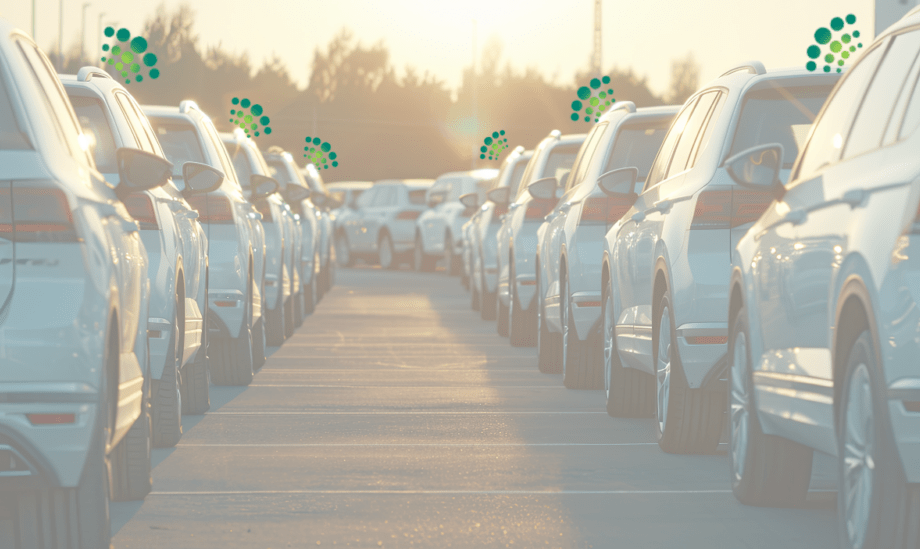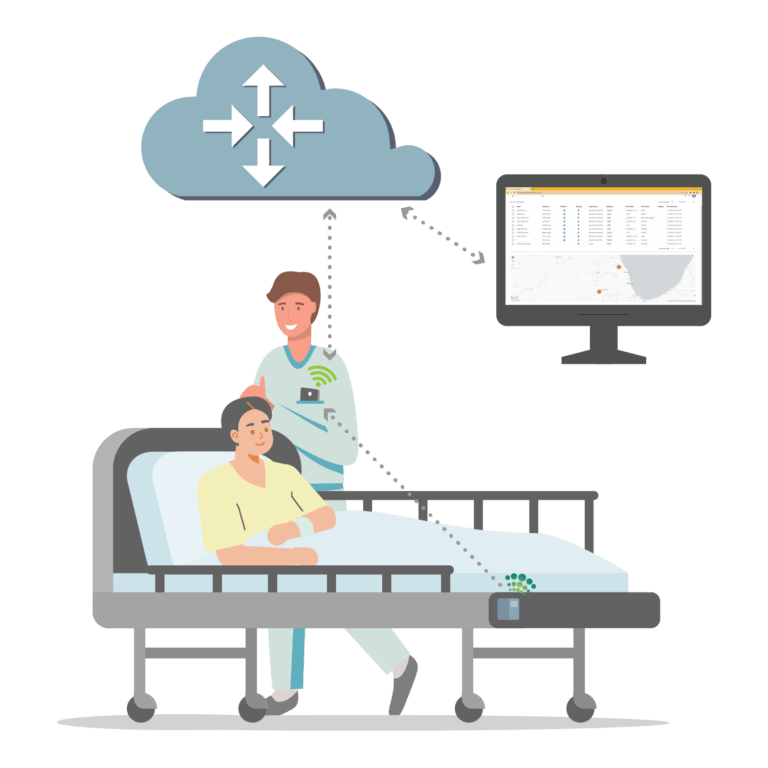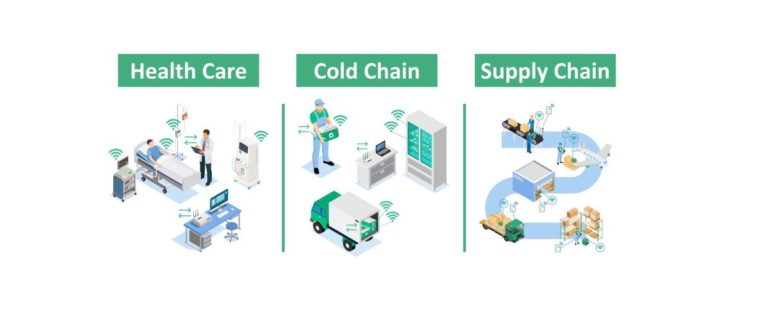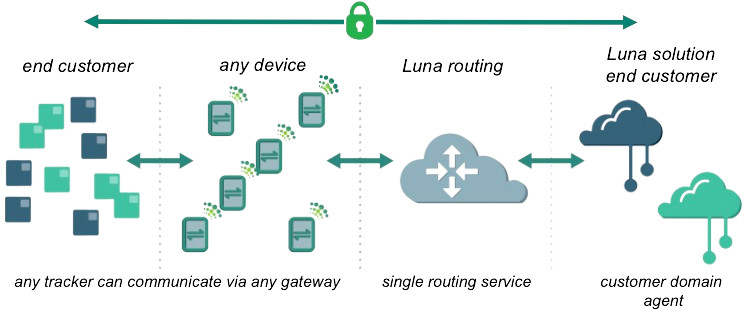From Cars to Cargo: How Bluetooth Tags Are Changing the Game in Yard and Fleet Tracking
Turn every workplace mobile device into a locator so you never lose track of where things are
The movie “Dude, where’s my car?” might have been a comedy of two friends’ misadventures, but what if you’re asking yourself this when managing a yard full of new cars that have been delivered and now need to go to dealers.
That doesn’t sound so funny.
Walking the yard to update and locate thousands of vehicles isn’t a good use of anyone’s time. Typical paper or spreadsheet-based yard and fleet tracking ‘systems’ are out of date nearly the moment they are completed. Some facilities have deployed RFID systems to solve this problem, but RFID systems require large investments in reader infrastructure and technology to work. Some solutions use expensive LTE-powered GPS devices, but these devices aren’t just expensive, they have terrible battery life. Using LTE GPS requires an entire system to manage charging the devices on a (very) regular basis.
But there is another way. A way that taps into a pervasive communication technology: Bluetooth. Bluetooth provides extremely low-power connectivity so that a GPS-LTE tracker that would run out of battery in a matter of days or weeks can be replaced by a GPS+BLE tracker that can last years. These trackers can be attached to virtually anything so you can have real-time location visibility into whatever it is you’re moving, shipping, or tracking.
Keeping track of where things are is an essential part of all shipping
Things are constantly changing in the yard. Containers are picked up. Containers are moved. Shipments arrive, shipments leave. Everything is moving so, you never quite know where things are, do you? But knowing where things are, to within a few yards, is essential to running an efficient yard (pun intended). Sending someone out to get a trailer or container or load cars onto a transport for delivery and things aren’t where they should be, only leads to someone wasting time wandering around looking for things.
To deal with this, larger yards and companies have tried deploying active/passive RFID or LTE-based GPS systems to track and locate things. But there are problems with both these systems: cost and complexity.
RFID and LTE GPS are costly and require specialized support systems
Automated systems that use RFID require additional reader infrastructure, either specialized handheld readers or fixed readers that require cabling throughout the yard, and other hardware investments. This means that RFID systems need months to install and configure. Installing the cabling, towers, plus all the sensors, will disrupt your usual flow. The last thing you need is a solution that’s supposed to make things better, cause chaos throughout the yard getting it set up.
LTE-based GPS devices can automatically deliver location data without additional infrastructure, but require constant recharging plus the cost for the connection to the cellular network. Imagine needing to manage thousands of additional devices all over your yard that you not only have to keep charged, but cost money every moment of every day.
And both of these systems are costly to maintain and train people on. What you need is something that’s already everywhere, easy to use, inexpensive, and takes less than a week to non-disruptively set up. And you’re probably using it right now: Bluetooth.
Bluetooth solutions are small, inexpensive, and use your existing infrastructure
With or without GPS, Bluetooth trackers can use an app on employee workplace devices to provide automated hands-free data such that you can have an updated map of everything in the yard. The mobile devices create a connectivity mesh across your yard. Instead of needing network relay points all over the yard–which need to be put on poles and require power–work,-managed smartphones and other existing workplace devices act as the gateways to relay information. They carry signals from trackers and sensors to the internet. As the trackers move, you don’t need someone to scan them and update the location, the next time someone goes by the spot–the new location is automatically updated. Just by having people do their normal work around the yard, their devices are doing double duty to keep updating locations.
Bluetooth connectivity is especially effective for auto yards. When cars arrive from overseas or a stateside factory, their GPS systems aren’t set up yet, so you can’t use the in-car systems to track vehicles as they are unloaded, parked, and readied for delivery. You need something that can be deployed quickly as cars come off the ship that gives you hyper accurate locations at all times.
GPS+BLE trackers are small and light enough to fit on a small hang tag–like a parking pass–on the rearview mirror. Hanging these tags gives you all the benefits of LTE GPS without the overhead costs or work required to keep them charged.
Here’s how it works.
Bluetooth is everywhere
Virtually every phone, tablet, and laptop already have Bluetooth built in. Because Bluetooth is everywhere, secure, and reliable, it’s the perfect foundation for location trackers. You don’t need a special device to pick up a Bluetooth signal, you–and everyone else–already have one: work-issued smart devices. Smartphones, or other work-related devices like tablets and barcode scanners serve as the perfect gateways for picking up and transmitting sensor location and data over the internet and to your systems. Employees don’t have to do anything to keep the map updated, an app installed on their work devices takes care of that. Even deploying trackers is easy with mass configuration and addition to your system, employees just have to note what a tracker is going on, and everything else is handled.
Energy efficient Bluetooth Low Energy (BLE) vs battery-draining LTE
Everyone who has a smartphone knows how long batteries last. Charging your phone at least once a day is the norm, but imagine needing to keep track of and charge hundreds or even thousands of “mini smartphones.” LTE-based GPS devices need constant charging. This means someone needs to stay on top of which devices need charging, charging them, and putting them back into service.
With Bluetooth Low Energy (BLE) trackers, the advantage is right there in the name: low energy. BLE trackers have battery lives measured in years, not hours. BLE sensors are designed to be used until the battery runs out, at which point you either replace the battery or recycle the sensor and deploy a new one. In either case this is a fast and easy step someone can do as they work in the yard.
Keep LTE as a fallback
For the times when Bluetooth isn’t available, some trackers include LTE modules that only kick in when there are no Bluetooth devices available. The LTE modules need more power than Bluetooth alone, but these LTE modules are designed to be energy efficient as LTE is used as a fall back. When something goes missing and isn’t showing up in the yard where it’s supposed to be, the LTE-enabled trackers can help you track down where something actually is.
From cars to trailers to individual cargo, BLE trackers can track locations on anything
BLE trackers are so small, light, and accurate you can even use them to track individual pieces of a shipment within a container or truck. Just sticking a tracker on and activating it with an app is all it takes to start tracking whatever, wherever you need. These trackers can even tell you where something is within the container and some trackers include environmental sensors to monitor temperature, humidity, shocks, and vibration.
Small trackers, simple app, ubiquitous technology
Luna XIO’s BLE trackers, paired with an easy-to-use app and secure cloud connection, make location and environmental tracking effortless. By leveraging Bluetooth and devices your team already uses, Luna transforms everyday technology into a powerful tracking system, suitable for a variety of industries—from healthcare to supply-chain monitoring. Best of all, deployment takes days, not months, and works with your existing infrastructure.
With Luna’s groundbreaking communication protocol, you can track everything from cars to cargo with precision. BLE trackers can be configured en masse, and the Luna Locate app seamlessly integrates with your Mobile Device Management (MDM) system. Minimal training is needed, and in many cases, the app works in the background without requiring any manual input.
Data is securely transmitted through the cloud to your existing ERP, EAM, and yard management systems, allowing you to optimize your entire operation. With Luna XIO, you’ll have the insights to transform your processes from the ground up. Interested in taking your yard and fleet tracking to the next-level? Schedule a free demo today.







